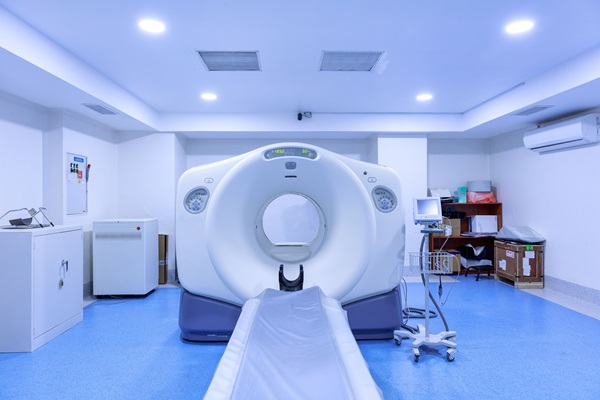5 Running Injuries That Can Be Treated at an Urgent Care

Wondering whether you can go to an urgent care clinic with a running injury? Read on to find out. Running is an excellent cardio exercise, but certain injuries can happen that may require urgent care. Many of the injuries occur from straining yourself beyond normal limits.
5 Running injuries treatable at an urgent care
The following are common running injuries that require treatment:
1. Stress fractures
Runners are generally prone to injuries to the shins, knees, legs, and feet. A stress fracture is a minor crack in the bone that commonly occurs in the feet and shins. The cause is attributed to constantly running and doing it too hard. Runners are advised to build their endurance first before attempting longer or harder runs. You can build up your body with cross and strength training.
If you experience a stress fracture, you need to take a break because additional stress on the bones may worsen the fracture. Seek urgent care immediately.
2. Shin splints
This running injury occurs as a pain in the front or inside of the lower leg, right on the tibia (shin bone). Shin splints occur from altering your regular routine, such as running long distances or increasing your running speed. It can also happen if you suddenly increase your run times. People with flat feet are more prone to shin splints.
Take a break to rest and perform stretching exercises. You should only start running after healing properly. Straining yourself may delay healing and require a visit to urgent care.
3. Muscle pull
Also called muscle strains, a muscle pull is perhaps the most common running injury. A muscle pull is a small tear in the muscle and is caused by stretching too hard or abruptly intensifying your routine. You may feel a popping sensation and pain in the area. The common locations of this injury are the hamstrings, calf, quadriceps, and groin.
The RICE treatment — rest, ice, compression, and elevation — works for pulled muscles, but you may still need to have the area checked by a doctor.
4. Achilles tendinitis
Inflammation of the Achilles tendon (a large tendon that connects the calf to the back of the heel) is usually caused by recurrent stress to the tendons. The condition causes stiffness and pain in the affected area and could worsen once you start exercising. Tight calf muscles can also cause Achilles tendinitis, thus warmup stretches are advisable.
Stop running and rest. Apply ice to the area and start a calf stretching regimen to regain strength. If the pain does not subside, a visit to urgent care may be required.
5. Ankle sprains
If you twist your foot while running, you may stretch or tear the ligaments around the ankle. Ankle sprains can be prevented by stretching properly before running.
You should rest and commence calf stretches to improve the pain. Apply ice to the area too. If the pain fails to subside, you may need to have the area checked by a doctor.
Tips for preventing running injuries
Running injuries may happen to anybody, but the following tips can help prevent injuries:
- Warm up: It is important to warm up by jogging or performing dynamic mobility stretches like arm or leg swings for five to 10 minutes before starting any running activity
- Gradually increase the volume of the run: Many runners adhere to the 10% rule, meaning that the highest rate of increase to their weekly runs is 10% at a time
- Recover from persistent injuries: The sooner runners take care of niggling ailments, the less likely they are to turn into more severe problems
- Practice the right techniques: A person's muscles and joints are put under more strain when they run with poor form. Working with a running coach or even recording the running technique might help runners become better at the activity
- Strengthen the hips: Stability exercises like glute bridges and single-leg squats may help runners prevent injury to their knees and ankles while training
- Run on soft grounds: An advantage of jogging on surfaces like sand, gravel, or grass is that it is less stressful on the joints than running on concrete. It is advisable to run on a softer surface when dealing with a persistent injury until the pain alleviates
- Consider incorporating cross-training: Including low-impact sports like cycling or swimming can increase one’s cardiovascular fitness while also giving the joints a respite from running's repeated stress
The bottom line
To prevent having to visit the urgent care center for running injuries, you need to be aware of your limitations. Perform the proper stretches before you start running and stay consistent with your routine until you have developed adequate endurance and strength.
Get more information here: https://tx-urgentcare.com or call Texas Urgent Care & Imaging Center at (832) 941-1894
Check out what others are saying about our services on Yelp: Read our Yelp reviews.
Recent Posts
X-rays are popular tools medical professionals use to diagnose a wide range of health conditions quickly and safely. They allow these professionals to see inside the body without invasive procedures, making them invaluable in urgent and primary care settings. Whether identifying fractures, monitoring chronic conditions, or detecting abnormalities, X-rays are critical in ensuring timely and…
A CT scan, or computed tomography scan, is a diagnostic tool that provides detailed images of the body’s internal structures. This non-invasive procedure helps medical professionals diagnose and monitor various conditions, from injuries to chronic illnesses. Knowing what to expect during a CT scan can ease concerns and prepare patients for a smooth experience.A CT…
If you work in public transportation, you may need to have a DOT drug screening. The Department of Transportation (DOT) regulates this test and requires it for you. You might be wondering what this test is like. Keep reading to learn more.Congress passed the Omnibus Transportation Employee Testing Act in 1991. Congress knew that the…
Walk-in clinic provide convenient, accessible health care for non-emergency medical needs, making it an ideal choice when immediate attention is necessary. Understanding when to visit a clinic can help patients save time, avoid unnecessary trips to the emergency room, and receive quality care for their health concerns. These clinics handle various issues, offering fast, professional…


